She teaches English language, which I was excited about at first, because I have increasingly realized the value of grammar. However, I was stunned when I realized that language is really a class to teach these students who speak a mixture of Spanish, creole, and Garifina, and teach them how to speak proper English. The be
st way to describe it, is that it is similar to the way we treat students in high school who are learning Spanish, French, or German; we provide them with scenarios
, practice listening comprehension, and explain rules and then we practice them.
Today's objective was to work on listening comprehension. We were reading a short dialogue about dogs and animal cruelty. I asked students what they knew about animal cruelty and they explained that dog fighting is a tradition that they have in Belize, however most students are adamantly against it. I then read the dialogue between the two characters in the book and students had to tell me who would agree with certain statements about the mistreatment of dogs and taking animals and putting them into captivity. I took this opportunity to then extend it to their personal opinions and thought that I would use a technique I learned in graduate school where students show their opinions by getting out of their seats and going to a side of the room that has the words "agree" or "disagree" posted on the wa
ll. It was apparent that this was a new method for students that they had never seen before, nor had Miss Usher. I found the same issues I had with my class at Laney were present here in Belize: some students wanted to talk during the activity, while others were more quiet or disengaged. However, the students seemed to enjoy the change of pace and I even got an ovation after class. This support is very helpful to me and makes m
e excited to wake up in the morning and go to school.
Lunch was also full of excitement. Today we had a fight break out in the auditorium where students eat lunch. I had missed it, but Miss Usher told me that it was part of a typical problem at the school: gangs. And which gangs do you think might have caused these problems? That's right, the bloods and the crypts, the same ones we have in our schools in North Carolina. However, unlike New Hanover County, San Pedro does not have a gang task force, nor do they seem to have any support from the city police.

I got an email today from one of my professors, Dr. Smith, and he had a few questions about my school, which made me realize that I really haven't described the envir
onment in which I'm teaching. First of all, I wake up in the morning and take a stroll down the beach while watching the sun come up: not a bad way to start your day. After twenty minutes, I reach the school. The beach is literally the backyard of the school, as you can see by this picture on the left. Kids in San Pedro are required to go to school to about the age of sixteen and they have two options: they can go to a Catholic school or a public school. The Catholic school does not cost any money, however students must pay to go to public school. I'm no
t sure on the cost right now, but from what I have heard it is not very expensive. At our staff meeting yesterday, we realized the struggle of making families pay to send their students to school, as many bright students cannot afford to attend school because of fam
ily or economic issues and those who can afford, sometimes don't care.
The most obvious characteristic of the school population is that all students must wear their uniforms Monday thru Thursday and teachers wear khaki and white those days; Friday is "rag" day when the students and teachers can wear more casual clothing. The o

utfits are all-white clothing with the boys typically wearing white dickies and a button-down shirt with a patch of the San Pedro High School emblem. The girls have to wear a white dress with a small tie that is either, blue, yellow, green, or red. I believe the ties tell what form they are in, I will have to check on this. You can see a picture of my students listening intently to one of my stories in the picture to the left. By
the way, if you look closely through that window behind me, you can see the ocean, not too shabby.
I included a picture of the school in my last blog and you could probably tell it didn't look much like any school we are accustomed to. It has thirteen classrooms and one staff room where the twenty-five members of the staff have their desks. Interestingly, students do not move from class to class, the teachers are the ones who move. Students have a homeroom and that is where they are expected to stay all day long. It is no wonder they are so antsy by the time we get them for 8th period English. Oh yea, I should probably tell you

that classes are only 45 minutes long and there are eight periods in a day. It has been a change of pace to work on the traditional schedule, but I can see the advantages and disadvantages of this schedule versus block scheduling. To the right is one of my classrooms. They have these things called "chalk boards" where people use chalk to write on these slate boards. Apparently, this is what we used to use before white boards. Teachers have to bring their own chalk, and they are very territorial; they don't like to share it. It's like gold to them.
The curriculum is very much driven by the test students must take in order to get into college: the Caribbean Examination Council, or the CXC. I have noticed that when teachers at the high school have approached me about teaching a novel they have said "Don't worry about reading the novel, just read the analysis in this guide and use the guided notes." I don't know if this is how they typically teach, but I have seen a trend that many of the lessons are built around these pre-built curricula which is reminiscent of the prototypical direct instruction many of us tend to move away from. While I don't think students here would succeed under student-based instruction, I will be working on ensuring that the lessons I present will have some activities that students might enjoy, rather than simply reading from a script. The trick is, how to do this without coming off elitist and inadvertently stating that our way of teaching is better than theirs. So far, the reception has been successful from both teachers and students, so I won't try to rock the boat too much. I'm just trying to show a different way of teaching.
The curriculum is also driven by religion. You can't find a classroom that doesn't have a crucifix hanging on the chalkboard. Students take classes like math, science, and English, but then they also have to take classes like life choices, which outlines healthy living rules, and religion. You can tell that morals and religion are closely tied to public school.
These are the differences that I have noticed. I'm sure I'll find some more small things to discuss as I spend more time here. I'll be in touch with more tales of Belize. Until later,
Will

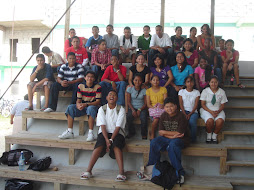

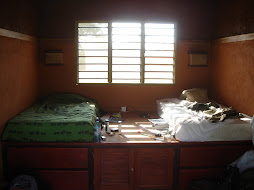















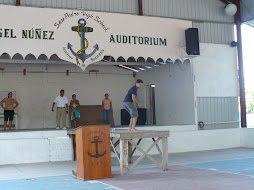
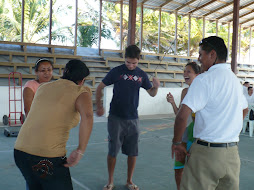
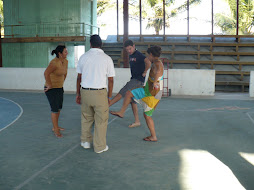

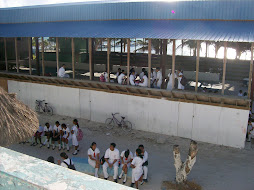
No comments:
Post a Comment